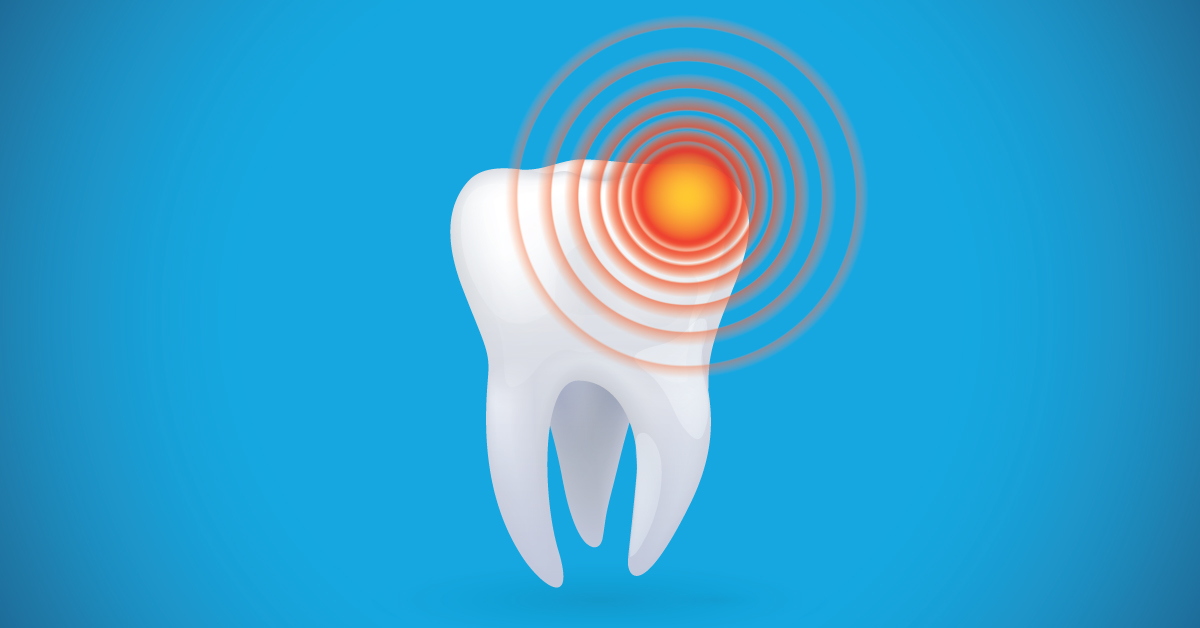Dentin hypersensitivity or sensitive teeth is one of the most common complaints from dental patients. In fact, a 2013 survey found that 1 in 8 adults may suffer from sensitive teeth. According to the same survey, sensitive teeth is most prevalent among young adults, women and people with receding gums or who did at-home teeth whitening.
As a dental professional, you’ve likely heard stories from patients who can no longer enjoy their morning cup of coffee or an ice cream sundae because of their sensitive teeth. While a simple course of action is to discuss their oral hygiene habits and suggest a desensitizing toothpaste, it’s important to understand the causes, diagnosis, clinical management and preventive strategies for addressing sensitive teeth.
Causes of sensitive teeth
Teeth sensitivity is generally defined as a short, sharp pain that arises from exposed dentin. Though there are no universally accepted guidelines for diagnosing dentin hypersensitivity, it is generally accepted that sensitive teeth are typically the result of worn tooth enamel or exposed tooth roots. To complicate the matter, dental caries, a cracked or chipped tooth, a worn filling or gum disease may also be the reason for a patient’s sensitive teeth.
The American Dental Association (ADA) lists the following possible causes of sensitive teeth:
- Tooth decay (cavities)
- Fractured teeth
- Worn fillings
- Gum disease
- Worn tooth enamel
- Exposed tooth root
It’s the role of the dental hygienist and dentist to work together to identify the cause of teeth sensitivity by reviewing the patient’s history, oral examination and by interviewing the patient.
Diagnosis and clinical management of sensitive teeth
Fortunately for patients, sensitive teeth can be treated. The treatment option you choose for a patient will depend on the cause. But a good starting point or first suggestion is often to recommend a desensitizing toothpaste, which contains compounds that help block the sensation traveling from the tooth surface to the nerve. Shop desensitizing toothpastes at pattersondental.com. Be sure to explain to the patient that it may require several applications before the sensitivity is reduced.
If the desensitizing toothpaste does not ease discomfort in the patient, in-office treatments may be required (view available desensitizers). A fluoride gel or desensitizing agent can be applied to the sensitive areas of the affected teeth. If symptoms of sensitive teeth persist, other treatments such as a filling, a crown, an inlay or bonding may be needed to correct a flaw or decay that results in sensitivity. Again, which treatment option to select will depend on the cause of sensitive teeth.
If gum recession is present, the patient may need a surgical gum graft to cover the root, protect the tooth and reduce the sensitivity. In cases in which teeth sensitivity is severe and persistent and cannot be treated by other means, endodontic treatment may be necessary.
How to prevent sensitive teeth
Discussing teeth sensitivity treatment options is a good time to also stress the importance of proper oral hygiene as this is the key to preventing sensitive-tooth pain. Be sure to ask the patient about their oral hygiene habits and make suggestions for improvements.
Many oral hygiene habits such as brushing with a fluoride toothpaste twice a day may sound obvious, but other ideas for preserving tooth enamel may be a new concept to a patient with sensitive teeth. For example, many patients may not know that eating or drinking acidic foods and drinks, such as carbonated drinks, citrus fruits and wine can remove small amounts of tooth enamel over time. Explain to the patient that it’s OK to enjoy an occasional carbonated beverage or a glass a wine, but that it’s important to counter that by drinking water to balance the acid levels in their mouth.
Understanding the underlying causes of teeth sensitivity and how to address the issue with a patient is critical to building trust and improving the overall patient experience. Being open and sincere when discussing the importance of proper oral hygiene habits as a preventative strategy will help you in building lasting and loyal relationships with your patients.
Speak with your Patterson Dental representative for products that address teeth sensitivity or shop all preventative products at pattersondental.com.
Sensitive teeth: References and additional resources
Mouth Healthy Brought to you by the American Dental Association. Sensitive Teeth. Accessed Aug. 5, 2022.
Thomas J. Salinas, DDS. What causes sensitive teeth, and how can I treat them? Mayo Clinic. Dec. 7, 2021.
Carina Storrs. 1 in 8 Adults May Have Sensitive Teeth. WebMD. March 1, 2013.
Davari A, Ataei E, Assarzadeh H. Dentin hypersensitivity: etiology, diagnosis and treatment; a literature review. J Dent (Shiraz). 2013 Sep;14(3):136-45. PMID: 24724135; PMCID: PMC3927677.
Liu, XX., Tenenbaum, H.C., Wilder, R.S. et al. Pathogenesis, diagnosis and management of dentin hypersensitivity: an evidence-based overview for dental practitioners. BMC Oral Health 20, 220 (2020).
Richard D. Trushkowsky, DDS; and Franklin Garcia-Godoy, DDS, MS, PhD. Dentin Hypersensitivity: Differential Diagnosis, Tests, and Etiology. January 2020. Parkell Online Learning Center.
– – –



